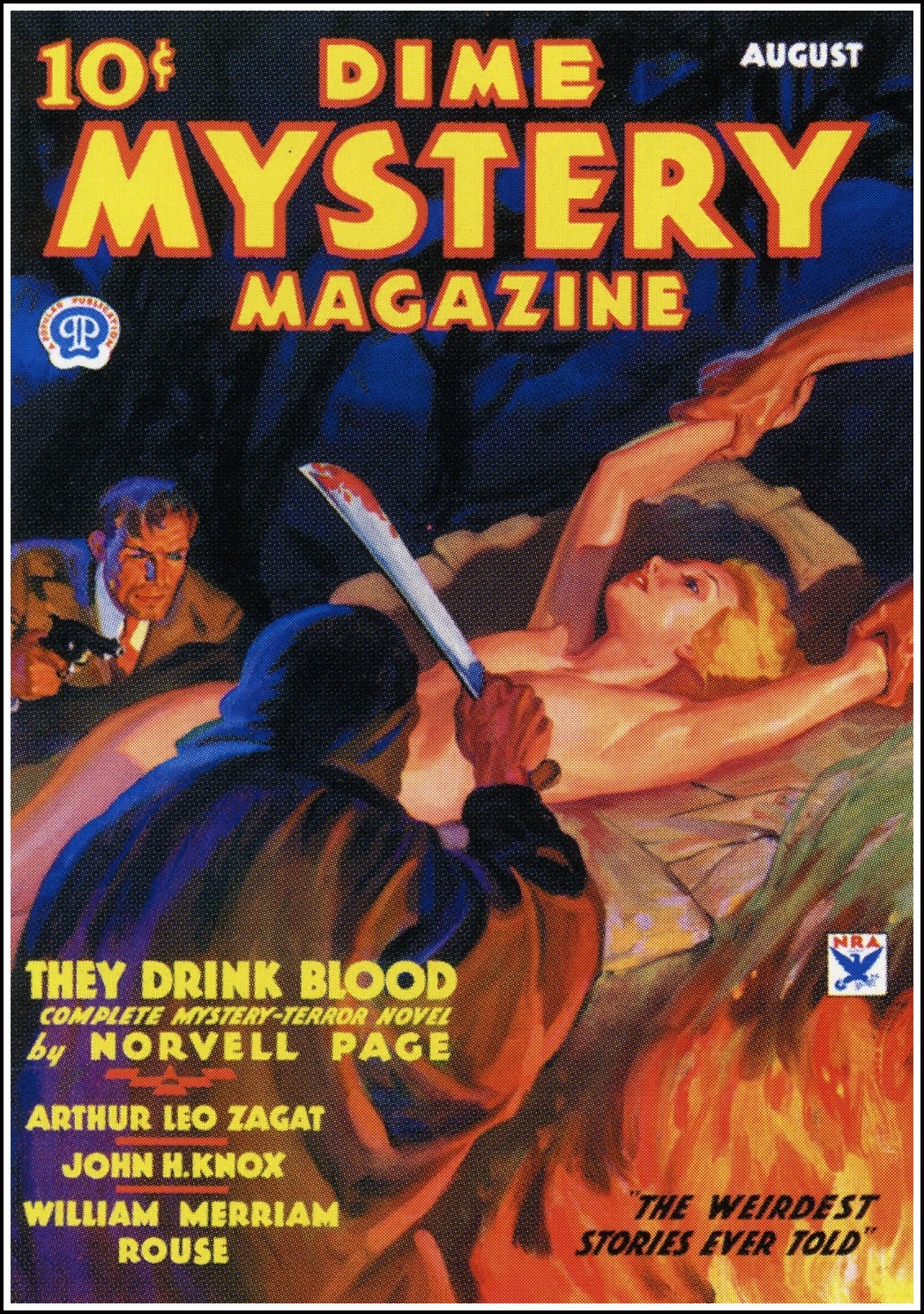Weird Menace on:
[Wikipedia]
[Google]
[Amazon]
 Weird menace is a
Weird menace is a
 Weird menace is a
Weird menace is a subgenre
Genre () is any style or form of communication in any mode (written, spoken, digital, artistic, etc.) with socially agreed-upon conventions developed over time. In popular usage, it normally describes a category of literature, music, or other for ...
of horror fiction
Horror is a genre of speculative fiction that is intended to disturb, frighten, or scare an audience. Horror is often divided into the sub-genres of psychological horror and supernatural horror. Literary historian J. A. Cuddon, in 1984, defin ...
and detective fiction
Detective fiction is a subgenre of crime fiction and mystery fiction in which an criminal investigation, investigator or a detective—whether professional, amateur or retired—investigates a crime, often murder. The detective genre began around ...
that was popular in the pulp magazine
Pulp magazines (also referred to as "the pulps") were inexpensive fiction magazines that were published from 1896 until around 1955. The term "pulp" derives from the Pulp (paper), wood pulp paper on which the magazines were printed, due to their ...
s of the 1930s and early 1940s. The weird menace pulps, also known as shudder pulps, generally featured stories in which the hero was pitted against sadistic villains, with graphic scenes of torture
Torture is the deliberate infliction of severe pain or suffering on a person for reasons including corporal punishment, punishment, forced confession, extracting a confession, interrogational torture, interrogation for information, or intimid ...
and brutality.
History
In the early 1930s, detective pulps like '' Detective-Dragnet'', '' All Detective'', '' Dime Detective'', and the short-lived '' Strange Detective Stories'', began to favor detective stories with weird, eerie, or menacing elements. Eventually, the two distinct genre variations branched into separate magazines; the detective magazines returned to stories predominantly featuring detection or action, while the eerie mysteries found their own home in the weird menace titles. Some magazines, for instance ''Ten Detective Aces'' (the successor to ''Detective-Dragnet''), continued to host both genre variations.Popularity and demise
The first weird menace title was '' Dime Mystery Magazine'', which started out as a straight crime fiction magazine but began to develop the new genre in 1933 under the influence of Grand Guignol theater. Popular Publications dominated the genre with ''Dime Mystery'', '' Terror Tales'', and '' Horror Stories''. After Popular issued ''Thrilling Mysteries'', Standard Magazines, publisher of the "Thrilling" line of pulps, claimed trademark infringement. Popular withdrew ''Thrilling Mysteries'' after one issue, and Standard issued their own weird menace pulp, '' Thrilling Mystery''. In the 1930s, the Red Circle pulps, with '' Mystery Tales'', expanded the genre to include increasingly graphic descriptions of torture. This provoked a public outcry against such publications. For example, '' The American Mercury'' published a hostile account of the terror magazines in 1938, "This month, as every month, the 1,508,000 copies of terror magazines, known to the trade as the shudder group, will be sold throughout the nation... They will contain enough illustrated sex perversion to give Krafft-Ebing the unholy jitters."Bruce Henry, ''The American Mercury'', April 1938; quoted in Jones, ''The Shudder Pulps'', pp. 138–39. A censorship backlash brought about the demise of the genre in the early 1940s.See also
* Exploitation fiction * '' Marvel Science Stories''References
Further reading
* * {{Crime fiction Horror genres